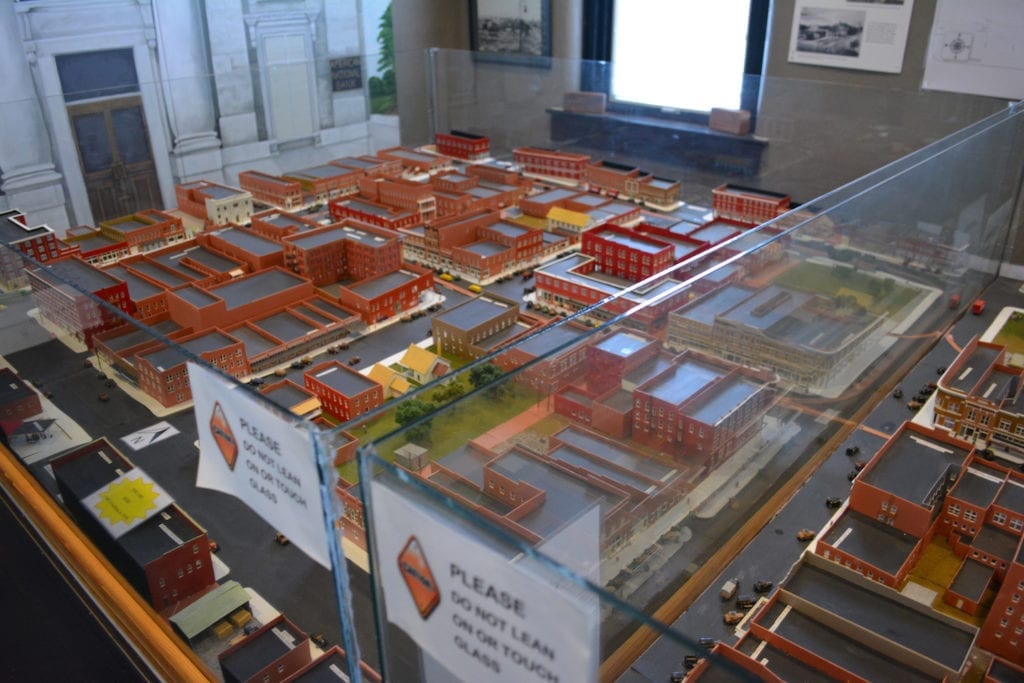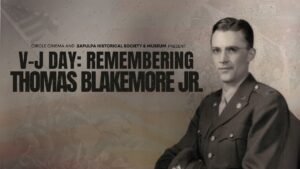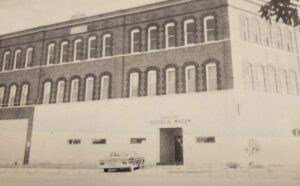In a nondescript building at 100 West Lee resides a veritable treasure trove of exquisitely displayed artifacts representing Sapulpa’s unique and rich past. The Sapulpa Historical Society, the keeper of the knowledge of the days of old, owns and operates a comprehensive museum of local history.
I recently sat down with Museum Director, Mike Jeffries, and Historian, Pete Egan, to gain some insight into how the Museum came to be, how they manage to operate and maintain such a well-ordered museum, and how it is funded.
The Historical Society started meeting in the basement of the Sapulpa Public Library (Bartlett-Carnegie Library). As they started gathering artifacts, they rented a room in the old Sacred Heart School. They were open to the public on Thursdays, 1-5 p.m.
In 1968, Virginia Lane, Mike Pacaud, Jesse Sullivan, Jim Hubbard, and Jean Brown formed the Sapulpa Historical Society. On July 26, 1968, articles of incorporation were filed with the State of Oklahoma to form a 501C(3), private, non-profit corporation. By the end of 1969, they had 108 paid members.
Before they had a building for the museum, Historical Society members stored artifacts in their spare rooms, garages, and a storage building on Brown Street. By the late seventies, they rented the first two rooms in the building on East Lee, which was then the YWCA. The YWCA only had 2 residents and the third room was used by the YWCA to serve lunch daily to local service organizations.
In 1982, the YMCA closed and the Sapulpa Historical Society acquired the building. Since the YWCA was a 501C(3), they were required to turn over their assets to another 501C(3). Since there was already a relationship with the YWCA, they decided to donate the building to the Sapulpa Historical Society. This was quite fortuitous for the Sapulpa Historical Society.
Director Mike Jeffries said the Historical Society raises funds to operate the Museum through donations, membership, and ownership and operation of the mini storage next to the museum.
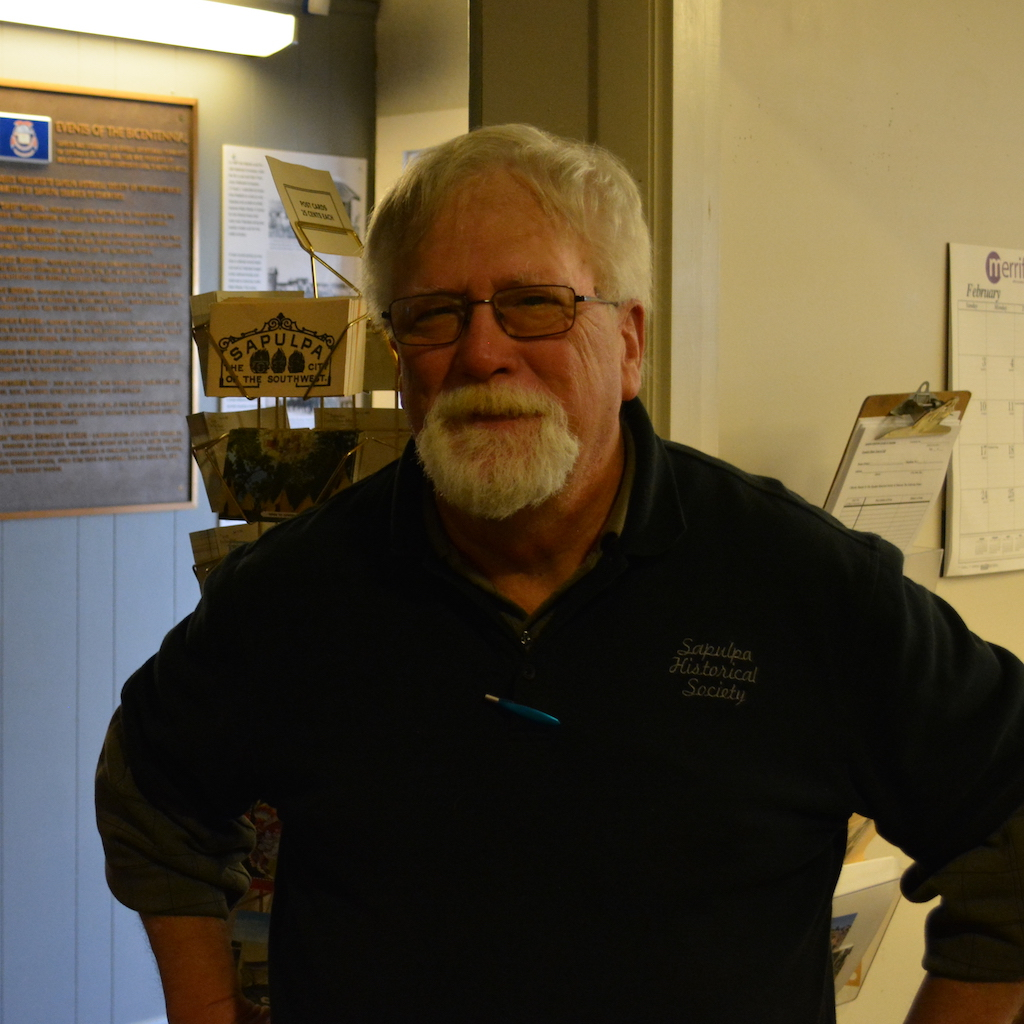
Mike Jeffries and Pete Egan, the historian, explained how they acquire their artifacts. Pete emphasized that all the artifacts had been donated. I then asked if they solicited donations of artifacts, both responded, “No.”
Mike Jeffries said, “The most common phrase is, ‘Mom just passed away and we don’t want to throw this stuff away. We thought you might have an interest in it’,” “That is how we built a three-story museum,” Mike quipped.
I then asked Pete what prompted him the build the diorama of Sapulpa that is displayed in the Museum. He replied, laughing, “I just wanted to make it. I don’t know why. When I got ready to retire, I knew I was going to do different things. One of the things I wanted to do was build the models of the town. I didn’t know if I could do it or not, but I certainly looked at other models before I retired. I just thought it would be a great project.”
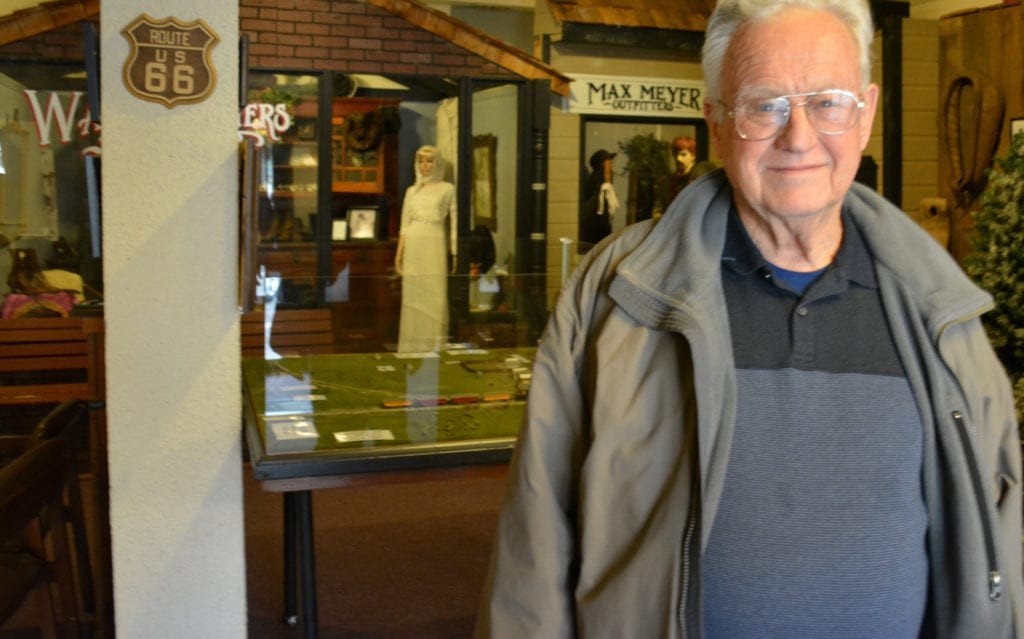
Pete obtained the information to build the diorama of the town from Sanborn Maps. These are insurance books that have schematics of the town and its buildings, down to the last detail. Pete estimates he spent 5400 hours on the diorama of the town, which translates into 4-5 years of labor.
Pete also made the railroad dioramas that are on the first floor of the Museum. Sapulpa is blessed to have such a talented artisan to help preserve Sapulpa’s history.
When asked about the importance of preserving our history, Pete replied, “If you don’t know your past, you don’t know your future.”
Mike added, “To keep from making the same ridiculous mistakes made originally!”
The museum has one part-time employee and the rest are volunteers. Rachael Whitney is the Collections Manager, who is in charge of managing the artifacts and archiving the photographs. She has been a great help to me when doing my columns by providing scans of photographs when I request them.
The Sapulpa Historical Museum is a vital asset to our community. Besides preserving our past the Museum is an attraction for tourists traveling Route 66. Pete said that tourists, traveling from east to west or west to east, tell him this is the best stop, so far.
The museum is replete with dioramas, uniforms from many professions, artifacts from households, businesses, farms, schools, and the military. There are three floors of compendious displays of Sapulpa’s history. I have been in local history museums throughout the country, and I can state unequivocally that this museum is hands-down the best I have toured.
Membership in the Sapulpa Historical Society is open to anyone for a mere pittance. For only $15 a year, you can be part of a marvelous institution that preserves our past. There is a wide assortment of books for sale detailing the history of Sapulpa. Some are published by the Historical Society, but all are written by local authors, such as our own Don Diehl and Pete Egan.
I wholeheartedly recommend that you take a tour of the museum and listen to Mike, Pete, or other volunteers give you an exceptional oral presentation as you peruse the rooms full of relics.
I wish to thank the Director, Mike Jeffries, and Historian, Pete Egan for graciously granting me interviews and providing me with a wealth of information, enabling me to write this story.

